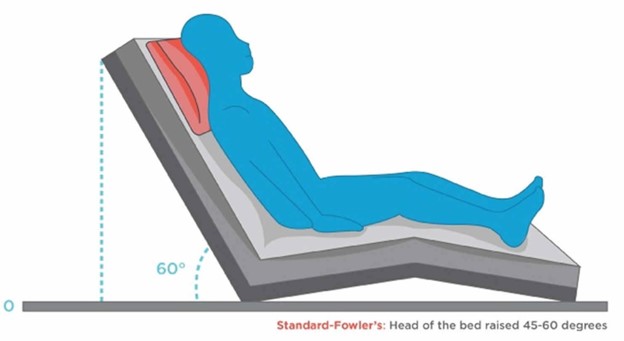A nurse is assessing a client who is receiving a blood transfusion. The nurse notes lung crackles, hypoxia, and distended neck veins. Which of the following actions should the nurse take? (Select all that apply.)
Stop the transfusion.
Place the client in high-Fowler's position.
Administer epinephrine to the client.
Obtain a prescription for a diuretic.
Administer oxygen to the client.
Correct Answer : A,B,D,E
The nurse should stop the transfusion, place the client in high-Fowler's position, obtain a prescription for a diuretic, and administer oxygen to the client. These actions can help manage the symptoms of transfusion- associated circulatory overload (TACO), which can occur when a client receives too much fluid too quickly during a blood transfusion.
c. Administering epinephrine is not an appropriate action for managing TACO. Epinephrine is used to treat anaphylaxis, which is a different type of transfusion reaction.

Nursing Test Bank
Naxlex Comprehensive Predictor Exams
Related Questions
Correct Answer is B
Explanation
Before administering enteral feedings via an NG tube, the nurse should check for gastric residual volume to ensure that the client is able to tolerate the feeding. If the residual volume is high, it may indicate delayed gastric emptying and the feeding may need to be delayed or the rate adjusted.
a. Encouraging the client to take sips of water may help maintain hydration, but it is not necessary prior to administering enteral feedings.
c. Flushing the tube with sterile 0.9% sodium chloride irrigation can help maintain patency of the tube, but it is not necessary prior to administering enteral feedings.
d. Encouraging the client to breathe deeply and cough can help clear secretions from the lungs, but it is not necessary prior to administering enteral feedings.

Correct Answer is B
Explanation
Parenteral nutrition (PN) with high concentrations of dextrose, such as 20%, requires a central venous line for administration to prevent damage to peripheral veins. Therefore, preparing the client for a central venous line is an appropriate action to include in the plan of care.
a. The PN infusion bag should be changed every 24 hours to reduce the risk of infection.
d. Blood glucose levels should be monitored regularly, but not necessarily daily, as PN can affect blood glucose levels.
c. PN and fat emulsions can be administered together in a single infusion.

Whether you are a student looking to ace your exams or a practicing nurse seeking to enhance your expertise , our nursing education contents will empower you with the confidence and competence to make a difference in the lives of patients and become a respected leader in the healthcare field.
Visit Naxlex, invest in your future and unlock endless possibilities with our unparalleled nursing education contents today
Report Wrong Answer on the Current Question
Do you disagree with the answer? If yes, what is your expected answer? Explain.
Kindly be descriptive with the issue you are facing.
